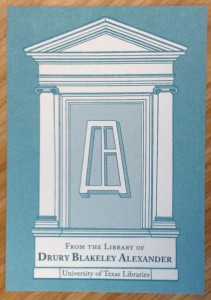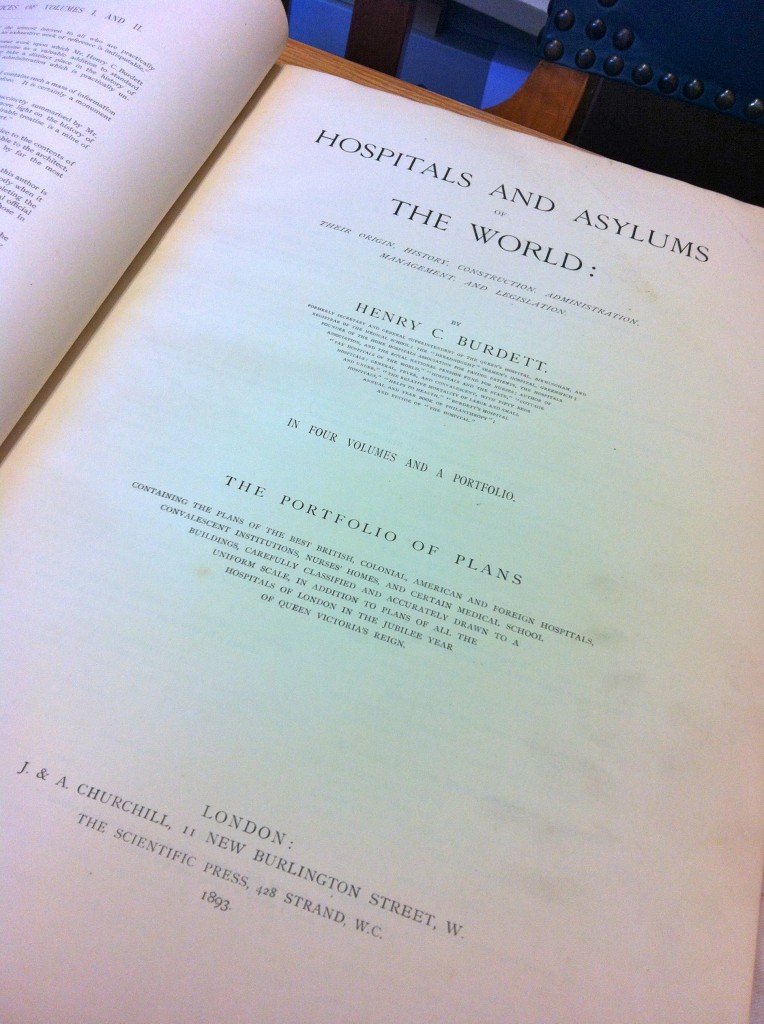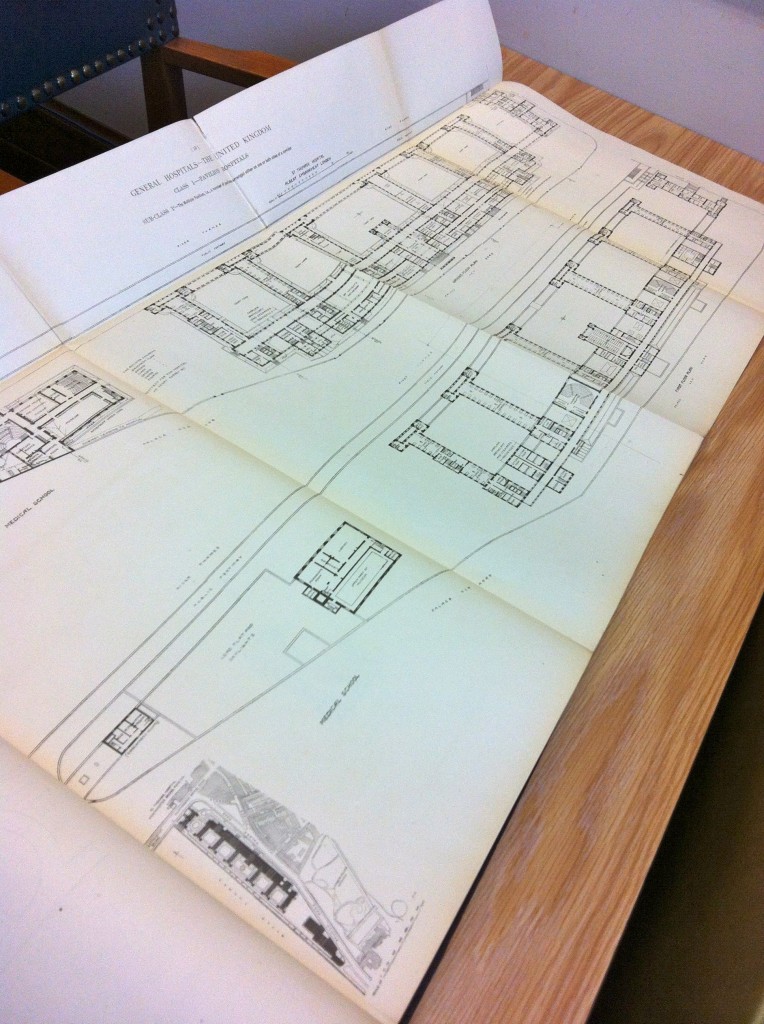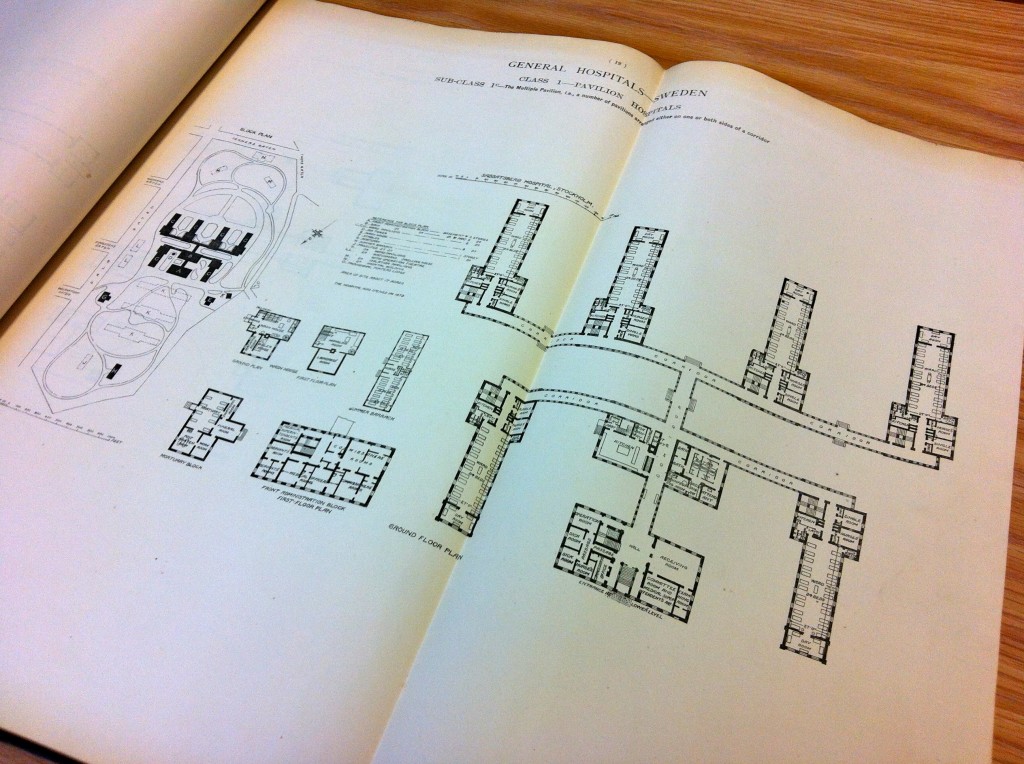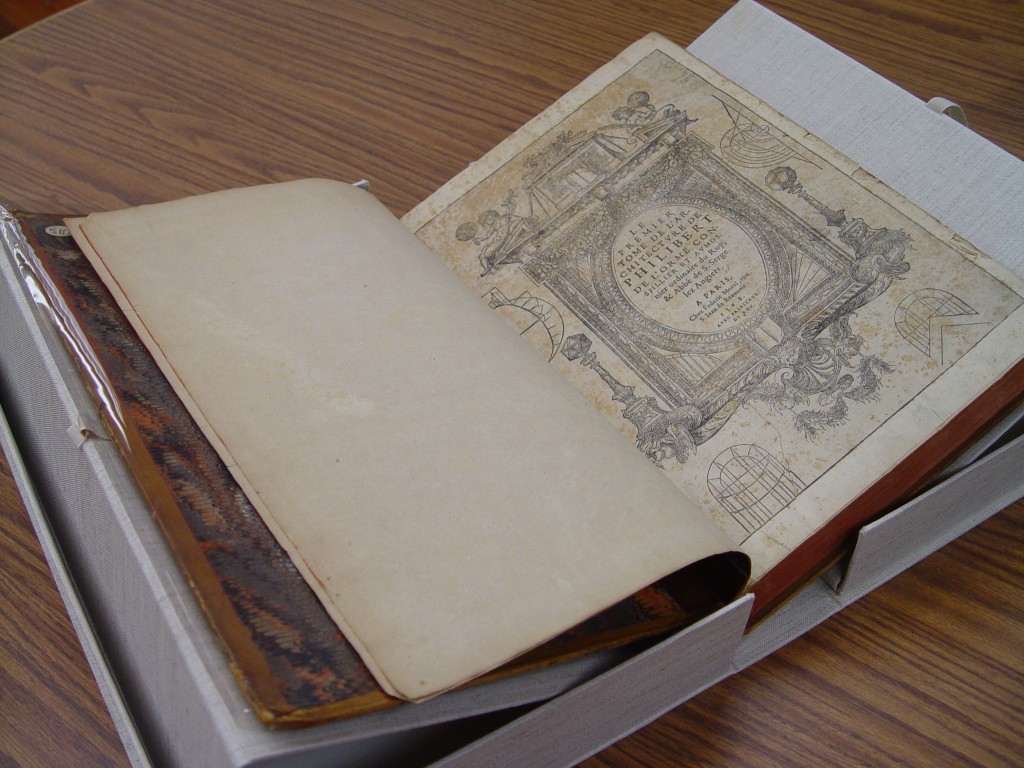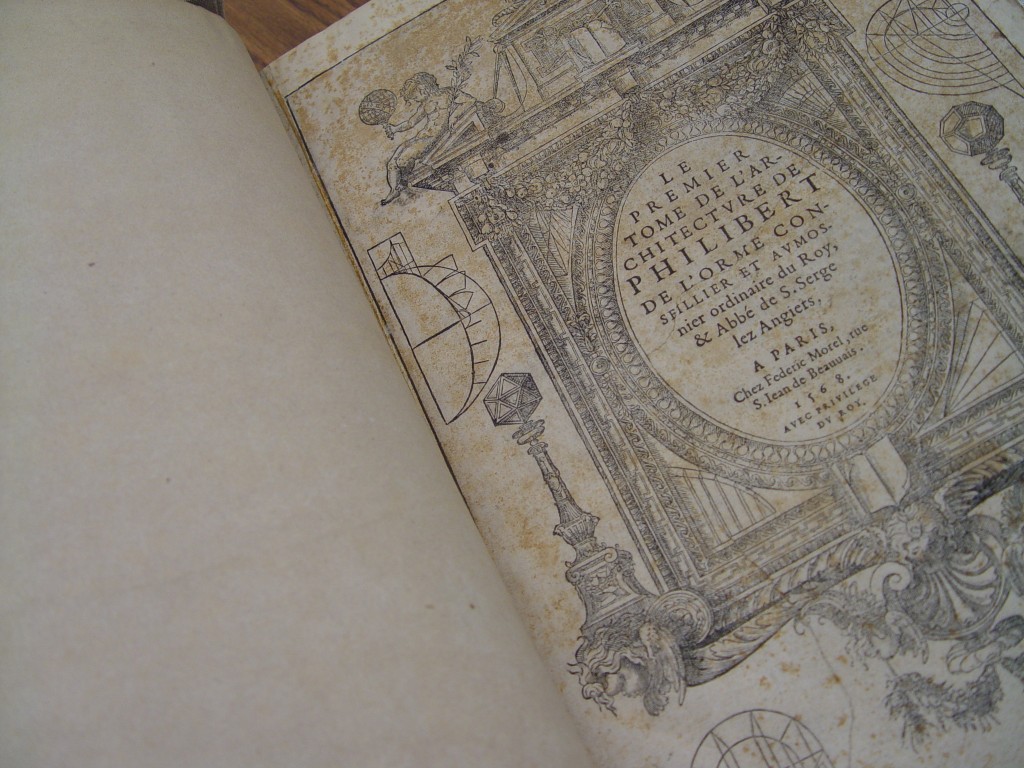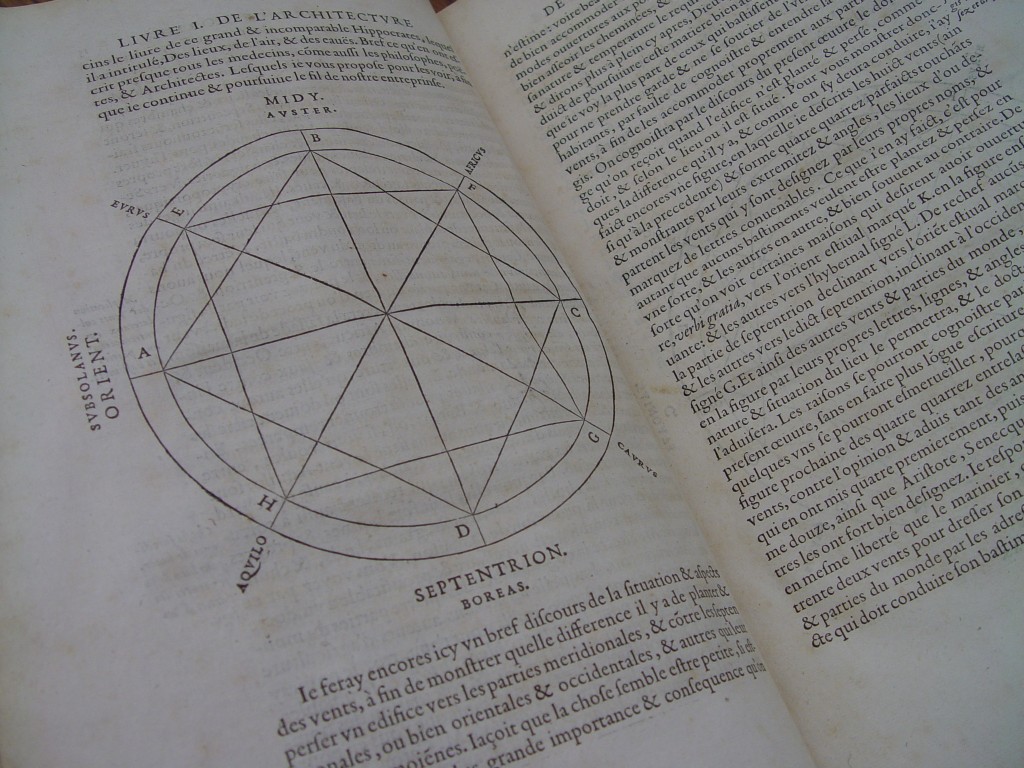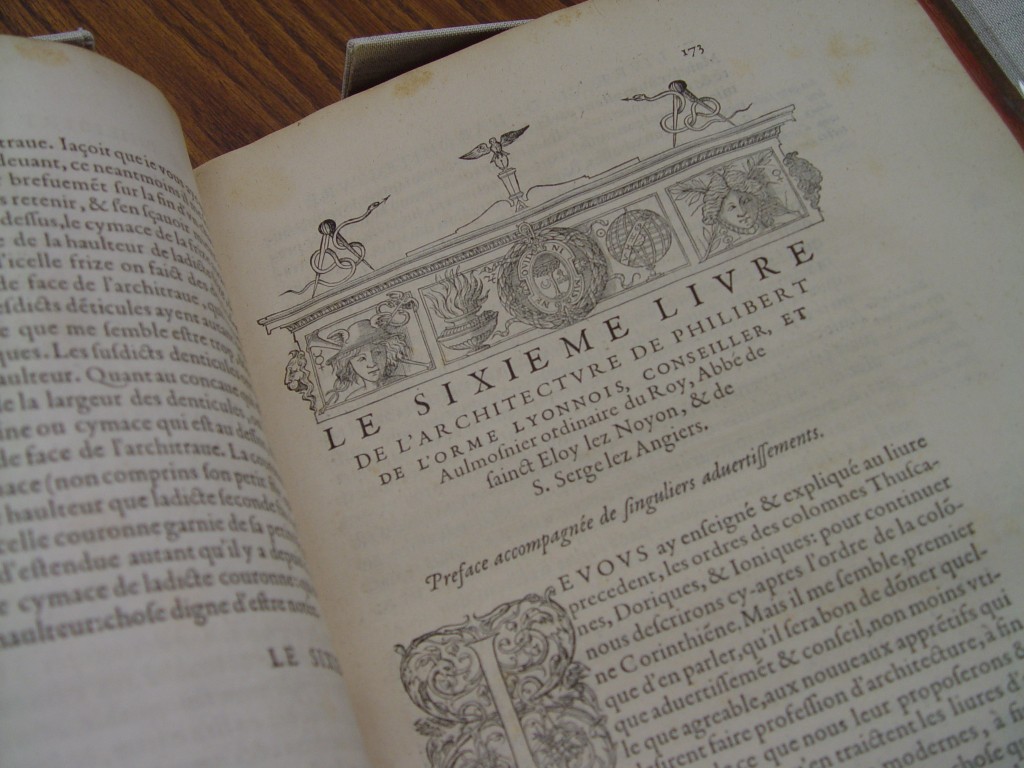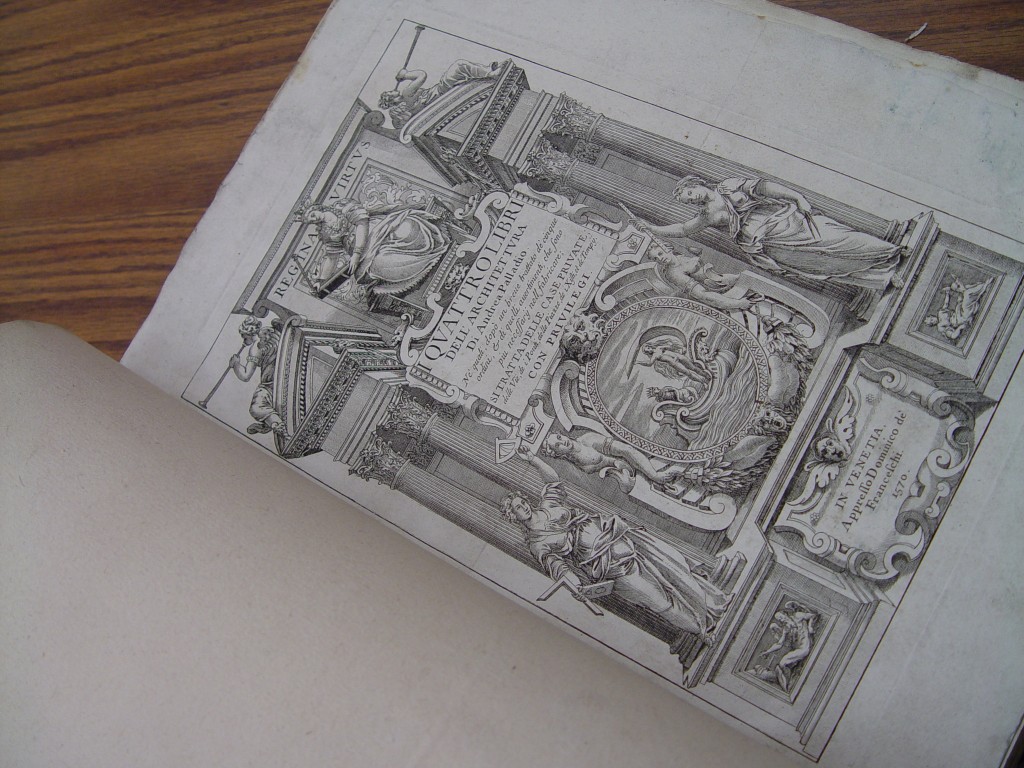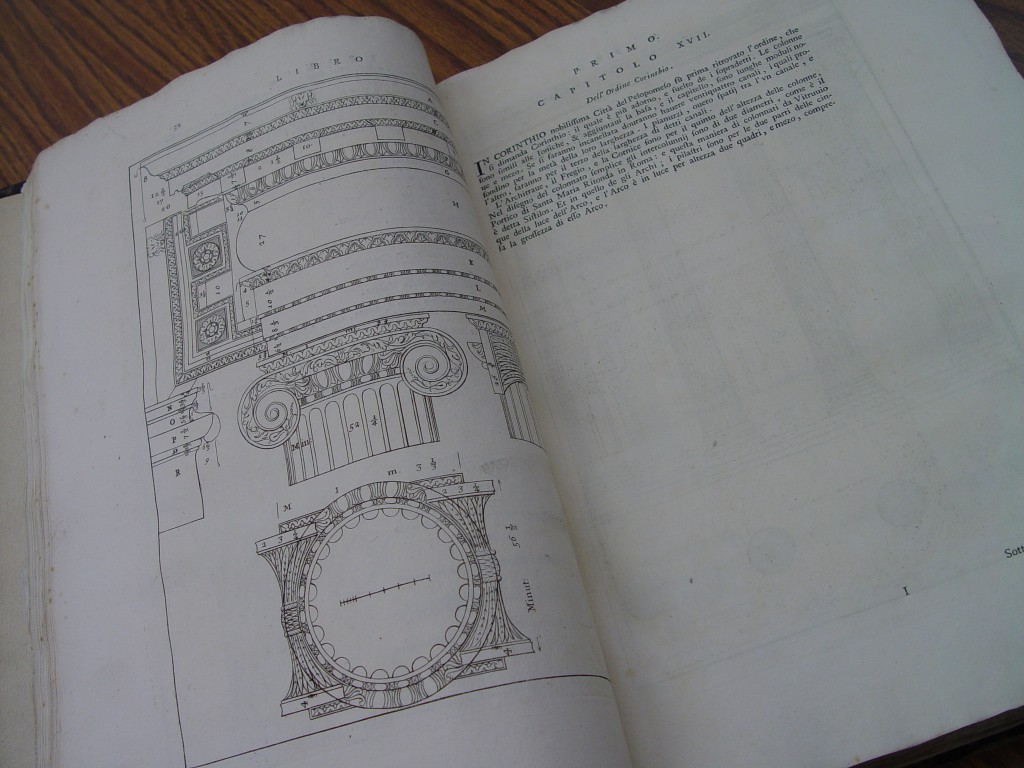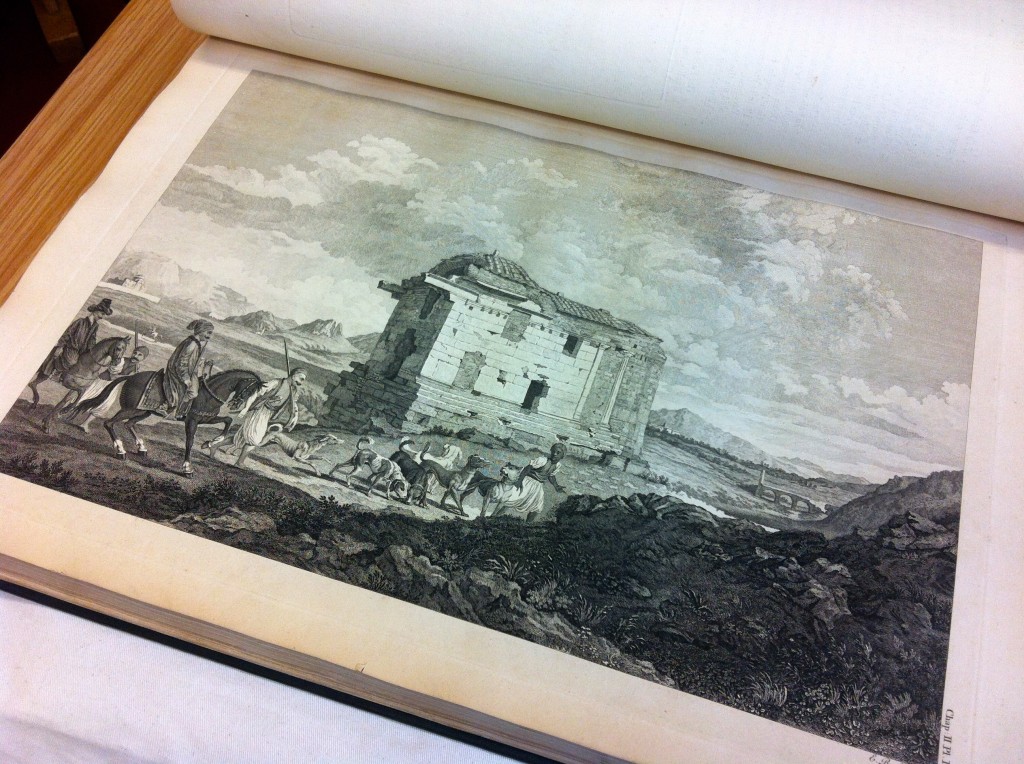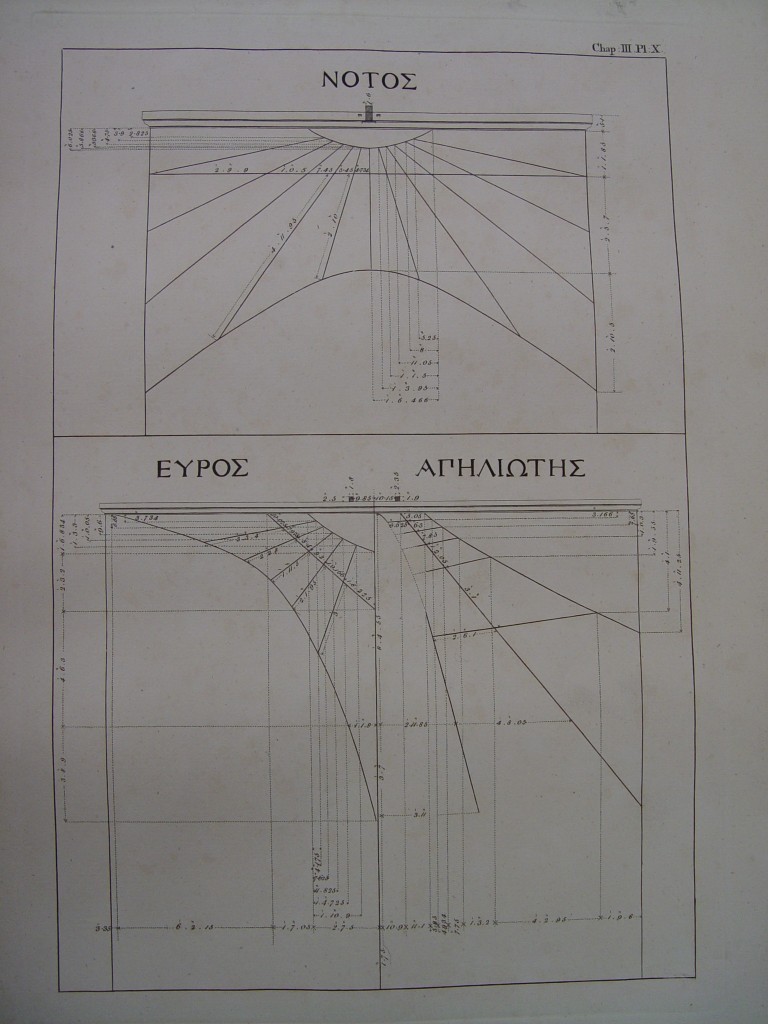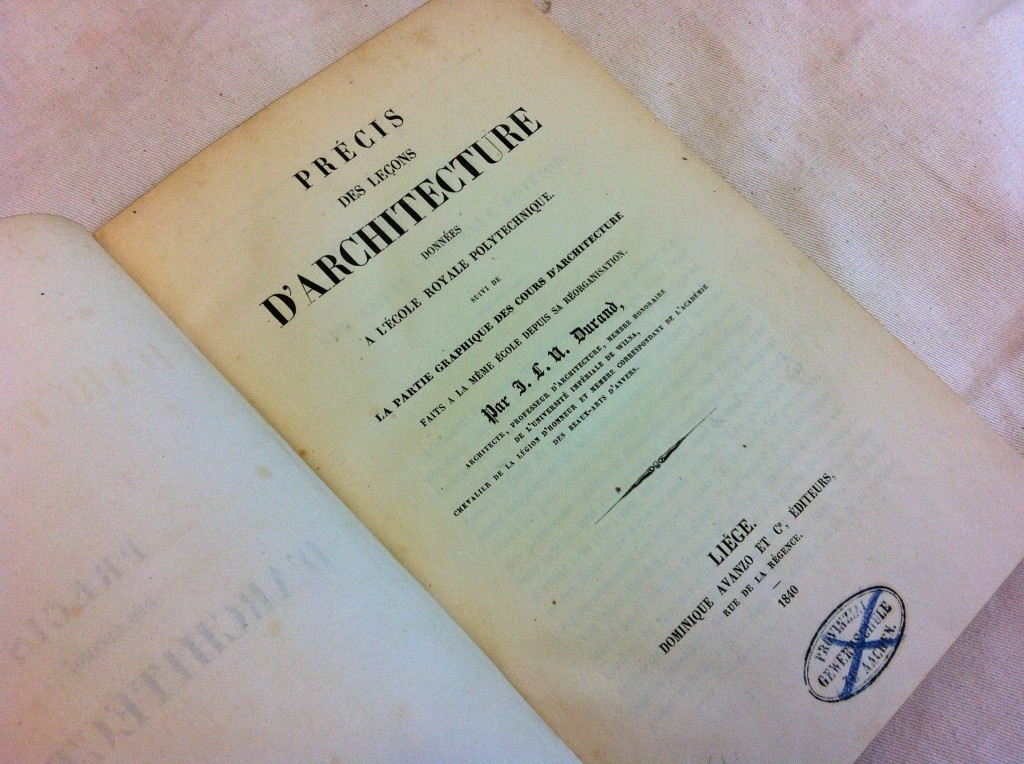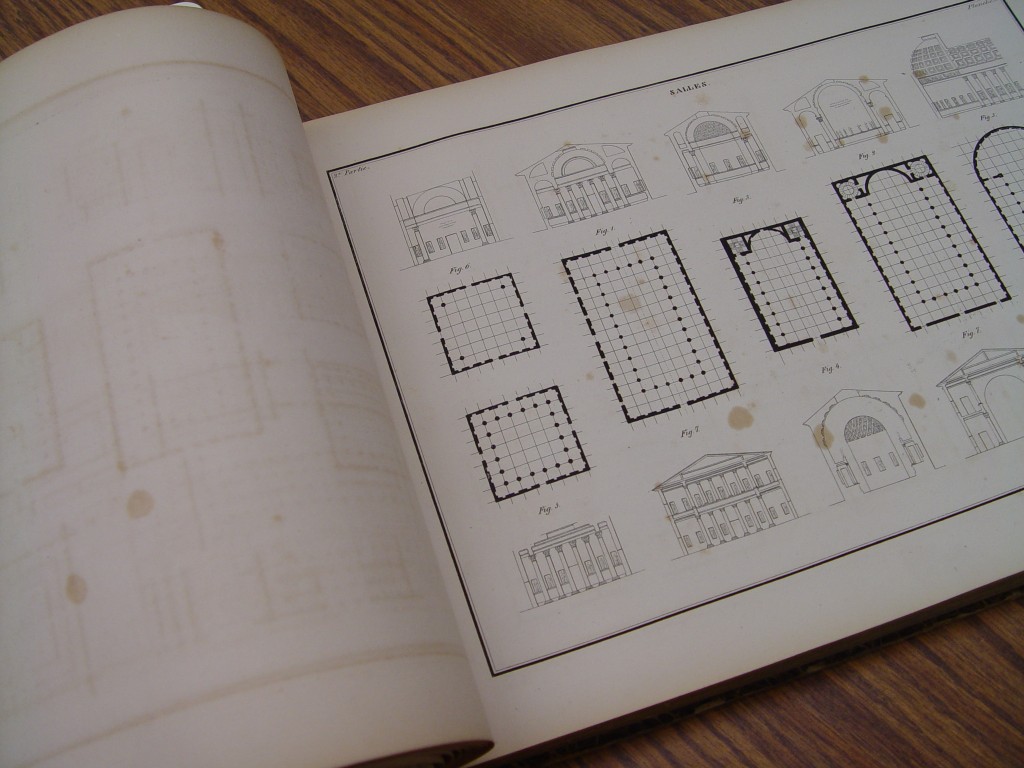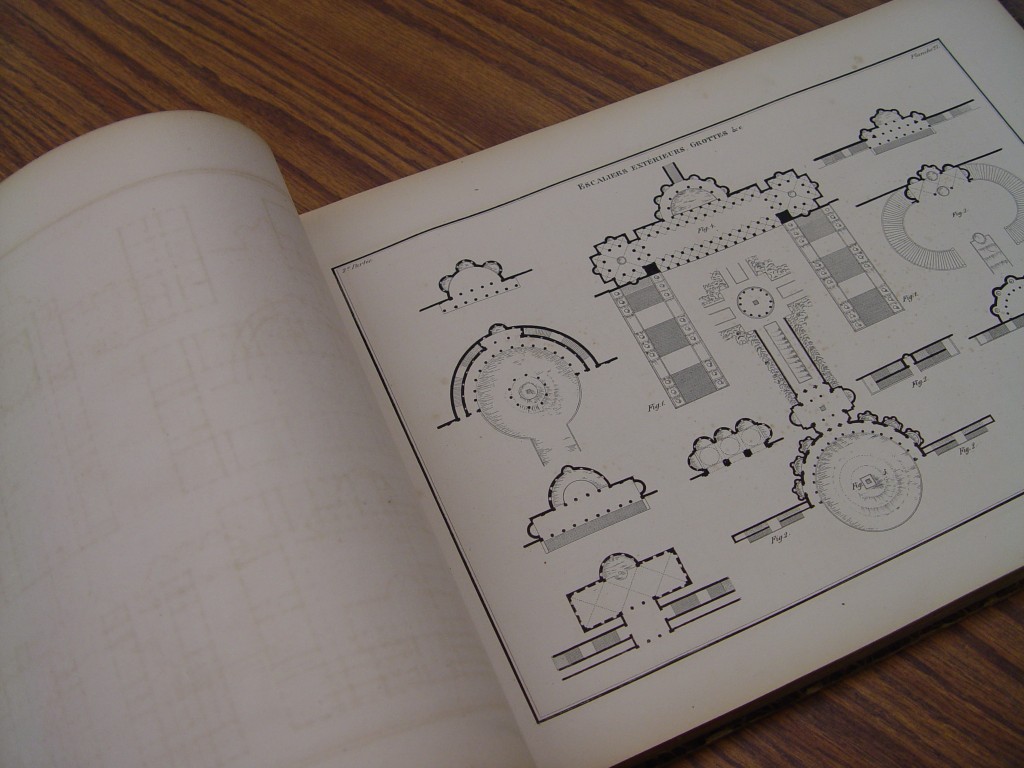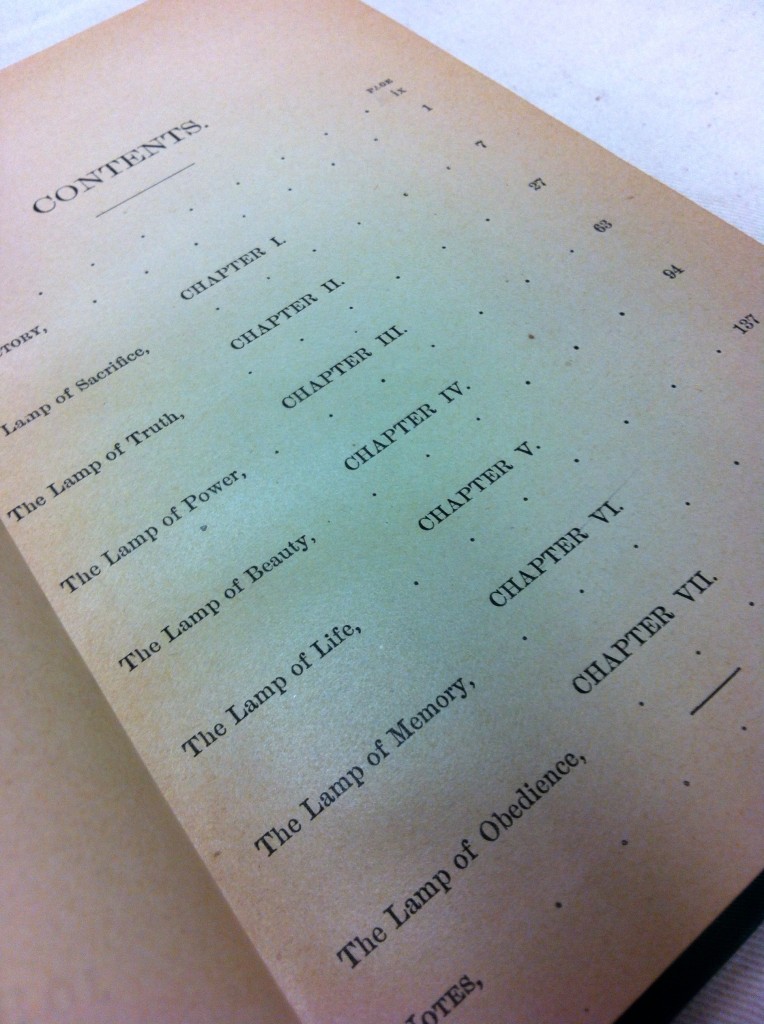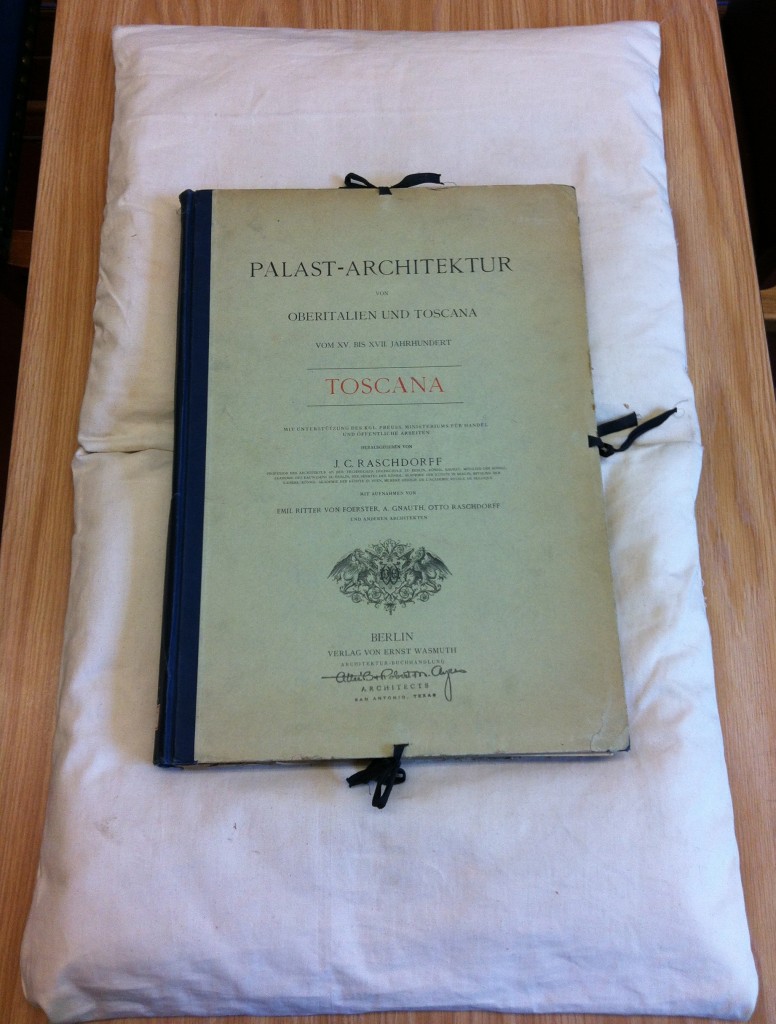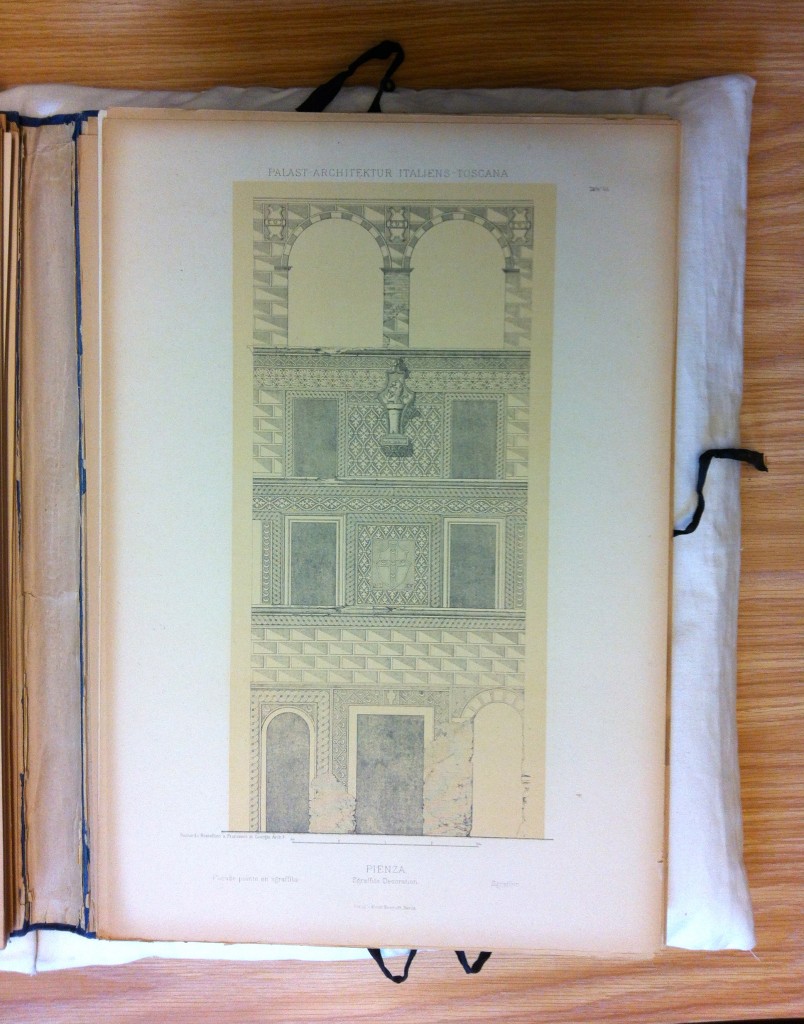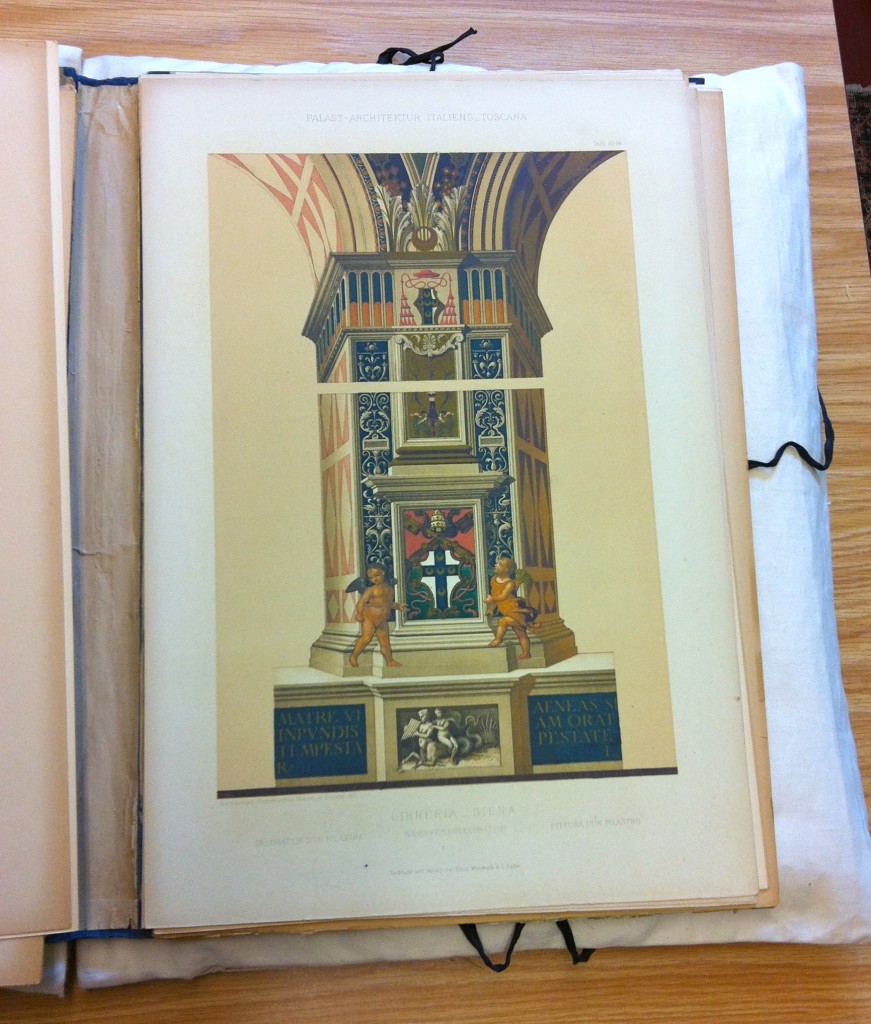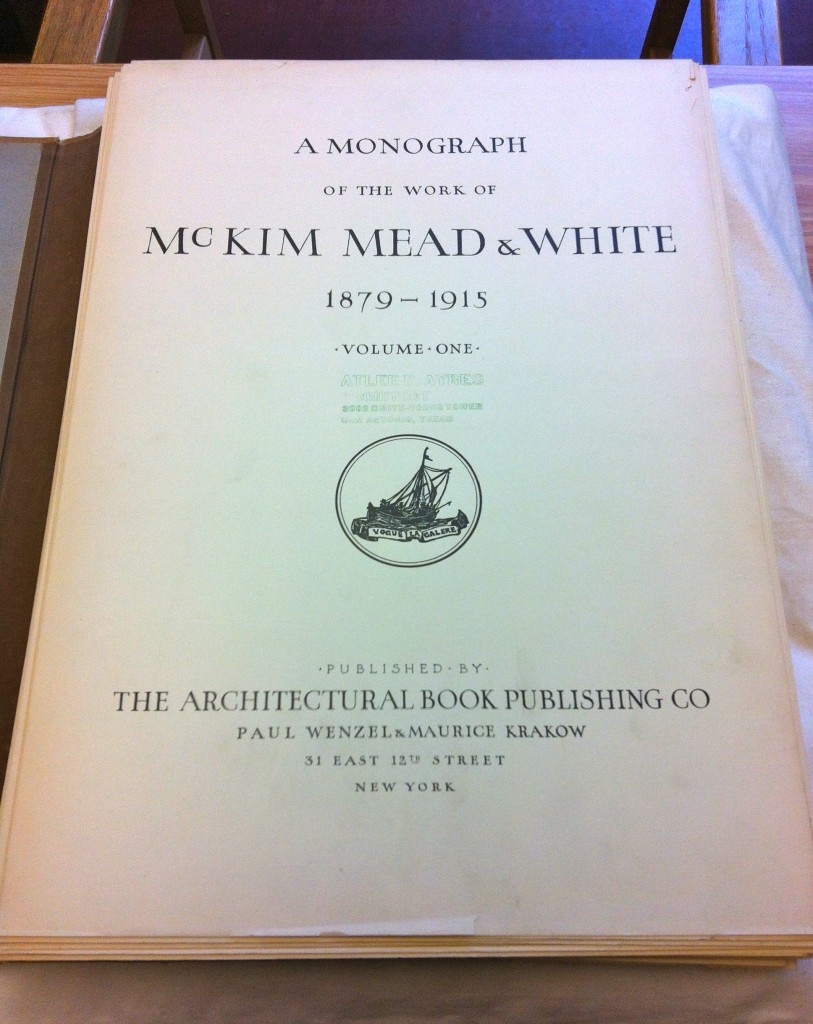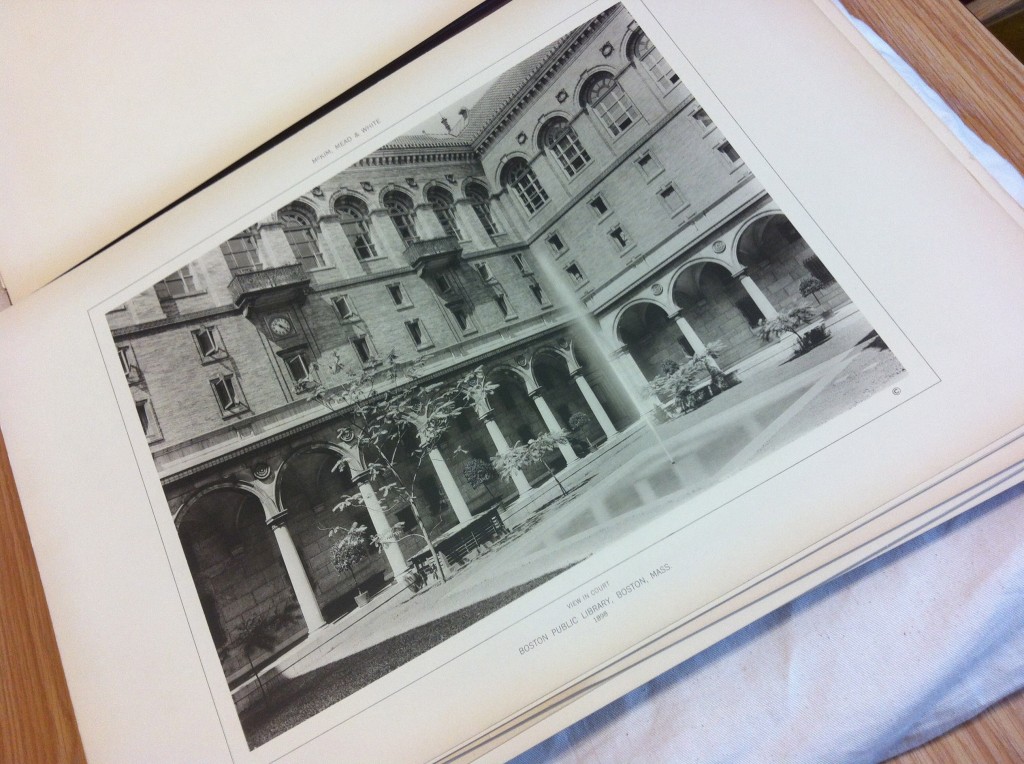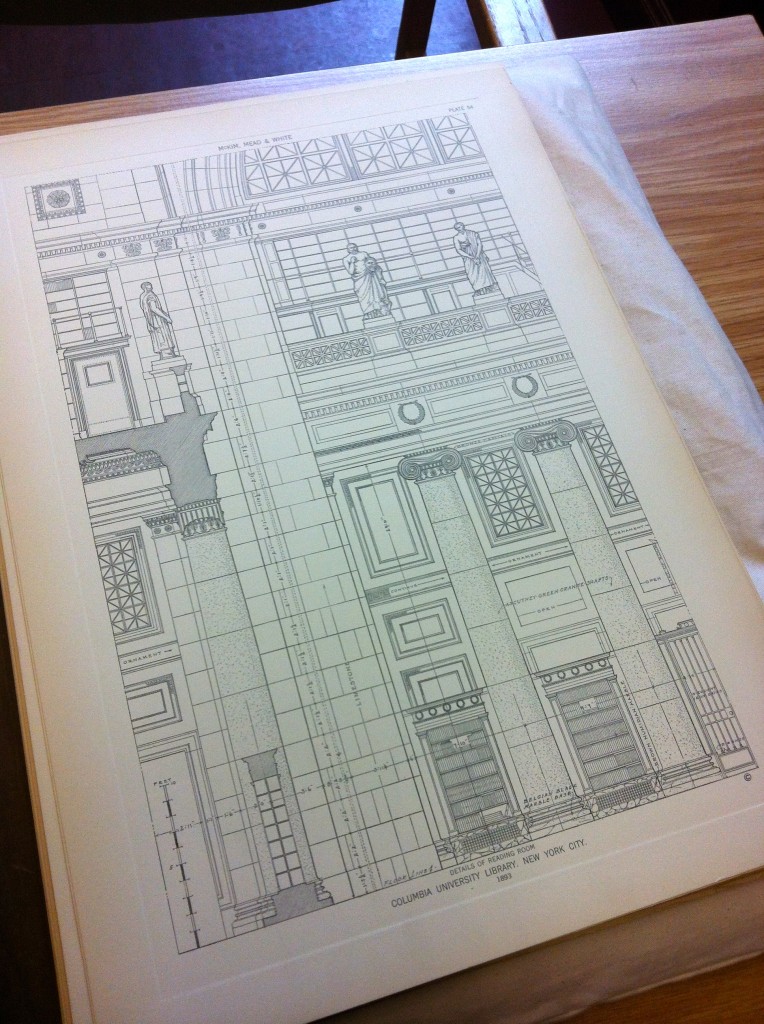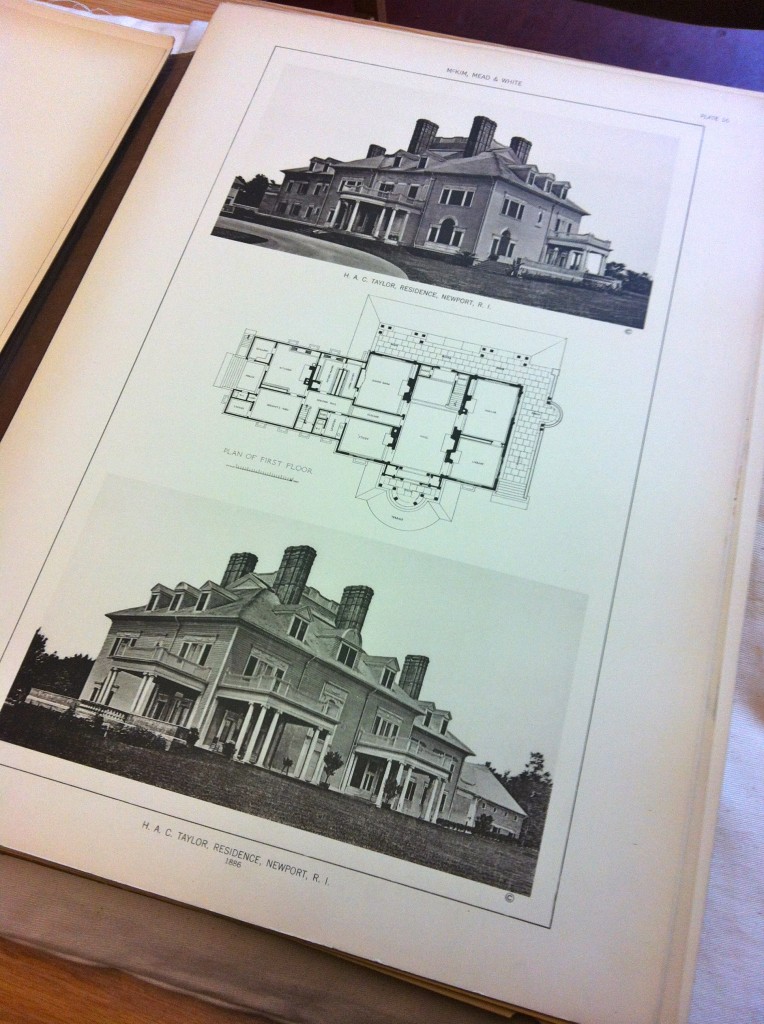The Library of Drury Blakely Alexander is a collection of architectural books assembled by Drury Blakely Alexander (1924-2011), or Blake (as he preferred to be called), over the course of his celebrated teaching career. Professor Alexander was both an alumnus of, and a distinguished professor in, the University of Texas at Austin School of Architecture from 1955 to 1994. During his time at the University of Texas at Austin, he also laid the foundations for the school’s nationally important collection of architectural drawings, photographs, papers, and other ephemera that since 1997 has been known as the Alexander Architectural Archive. His library, which encompasses over 6,000 volumes, represents just one part of a generous bequest made by Professor Alexander to the University of Texas at Austin School of Architecture.
Since early this summer, I have been processing books and adding provenance notes to the many titles in Blake’s library. Professor Alexander’s primary interest was in making his books available to scholars and students, so this is being done to enable greater access to his extensive collection. Each week this blog will highlight one of the unique, beautiful, or interesting titles that have piqued my interest as I have sorted through the Library of Drury Blakely Alexander. Stay tuned!

